#modern qipao
Explore tagged Tumblr posts
Text






bluer than a butterfly / beautiful and so deprived / of oxygen
#yovo does a face#qipao#modern qipao#qipao inspo#旗袍#cheongsam#modern cheongsam#chinese fashion#inspo#pose reference
141 notes
·
View notes
Photo
I really love the aesthetic of these dresses!










chinese fashion & vintage fashion by ChenLan_Vintage
#china#chinese clothes#aesthetic#mood#moodboard#chinese clothing#fashion#chinese fashion#aesthetic dress#aesthetic clothes#hanfu#modern hanfu#qipao#cheongsam#modern qipao#modern cheongsam#aesthetic fashion#in the mood for hanfu#hanfu on my mind#in the mood for qipao#qipao on my mind#in the mood for cheongsam#cheongsam on my mind#I WANT A HANFU ASAP#hanfu aesthetic#qipao aesthetic#cheongsam aesthetic#mood of the day#it's a vibe#dreamy aesthetic
2K notes
·
View notes
Text
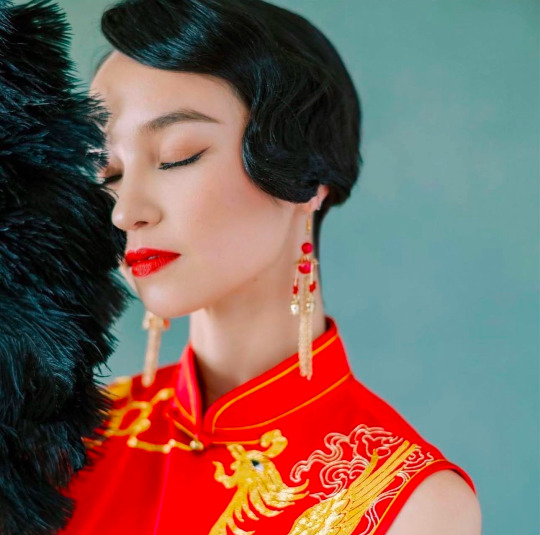
Shanghai 1920s Wedding Qipao Style: Red Lips & Classic Waves
Shanghai wave with red silk Wedding Qipao.
The Shanghai 1920s Qipao style is iconic for its timeless elegance, making it a popular inspiration for modern wedding Qipao designs. Characterized by its figure-hugging silhouette and intricate details, this style exudes sophistication and glamour. Brides often pair a traditional wedding Qipao with bold red lips and the classic Shanghai wave hairstyle, creating a vintage yet chic look that celebrates cultural heritage. Perfect for tea ceremonies or wedding banquets, the Shanghai-inspired Qipao embodies the allure of old-world charm with a modern bridal twist.
1 note
·
View note
Text
HAPPY CHINESE NEW YEAR STILTON FANDOM WOOOOO
I dunno how I finished all of these in a single day but now I got ten minutes to send them before CNY ends in my timezone LMAOOOOO


We got Nicky and Pam doing lion dance together, and Vi, Colette and Paulina in some snazzy qipaos to celebrate CNY :D
Hope this appeases you, Stilton fandom, now I shall disappear again for a month /j
#geronimo stilton#thea stilton#thea sisters#art#sketches#chinese new year#lunar new year#year of the snake#year of the wood snake#i dunno how i crunched the girls' qipaos in one or two hours but here we are and i am surprisingly proud of them <3#i did base them off of specific tailorings of qipao#violet is wearing a more traditional qipao which is more flowy and baggy and emphasizes elegance and comfort#colette is wearing a modernized qipao which is prolly the one you've seen if you've seen a qipao before#modern qipaos are more body-hugging and are all about accentuating natural curves to make the wearer look sexy#and paulina is wearing a bit of a hybrid thingy? i put her in this qipao and traditional vest top i dunno the proper name of#and this new trend going on in china apparently where you wear a long pleated skirt (ma mian qun) underneath your qipao#and the result is very much slay material#i like how they came out they came pretty :]#it took me less time to do the flowers than i thought haha what refs and a time crunch do to a bitch haha#reason i was rushing was because it's considered bad luck in china to celebrate a holiday late#not that i'm superstitious or anything but i did wanna make it in time#alrighty enjoy the sketch happy cny gamers#before you say i forgot nicky's tail#i headcanon that mouse lion dancers tuck their tails into their pants during performances so they don't tangle or shift the lion body weird#it's very baggy and comfortable dw their tails are and will be fine
24 notes
·
View notes
Text
i would kill for viet clothing that wasnt just ao dai i want an ao tac soooo bad
#same w qipaos theyre pretty but sick of the tight ones i always get i want at least a vintage one thats looser if i had to yk#but also oooough modern hanfu...#personal
2 notes
·
View notes
Text
i want to do the miku nationalities trend and since i came from two different cultures (chinese indonesian and toraja) it means that i have to draw two separate miku... im still on my artblock...
#personal#ill do chindo miku first idk what she gonna wear probably modern clothes or qipao or kebaya that 19th century peranakan nyonya wore
1 note
·
View note
Note
Hello I have a request, if you aren't doing requests please ignore this! But anyways the request is that may I have the TWST characters (especially the housewardens) and how would they react see their s/o in like traditional clothing from their world (example: Chinese traditional clothing is like qipao) Thank you so much! Have a fabulous day 💝
Qipao (Traditional & Modern) Reactions
Housewardens x Reader

Riddle
Traditional
Thinks the dress is beautiful. Even though it's loose, it still carries an air of professionalism. A perfect garment for his lovely rose. Really likes the modest nature of them.
Asks you lots of questions on the history of the garment if you know it. Ask if he could wear one as well. Just so many questions, he's pulled out a notebook to take notes.
Matching rose patterned qipao/tang suit for walks in the garden together!
Modern
WHY IS THE SLIT SO HIGH!?
Still thinks it's a very pretty dress, but he can not stop looking at the thigh slit. It compels him. Good lord, you're not even wearing tights!
Struggling to remain polite, but the dress is form fitting and you have a very lovely ass- excuse him, he needs to...be...out of the public eye.
Leona
Traditional
Jokingly calls it your fancy potato sack. Apologizes if you get actually mad at him calling it that.
Lowkey, he really likes it and does enjoy that it's still comfortable enough for you to nap with him. Half serious asks if they're pajamas.
Will start wearing Dashikis when you wear your qipao. Cultural matching ❤️
Modern
AYO-
Goes dead silent, his eyes are watching your every move. The dress is tight, the slit is mid thigh. You look good and he's pissed you're not in grabbing distance.
Tells you you can't wear that qipao outside of his room. Not even Ramshackle. Now walk closer, he's gonna...grab ya.
Azul
Traditional
Fascinated and asking questions. Both about the cultural history and the manufacturing side.
Thinks it's a very lovely dress with high marketing potential; simple yet perfect for all class levels due to the fabric and embroidery you can make with it.
Lowkey wants to gift you some more because he just likes them so much and he thinks you look elegant in them (Be his spouse please).
Modern
Honestly, it took him a hot minute to really notice. Since modern qipaos are made to be so fancy, he first started picking it apart to discern value like he does all new things.
Really noticed the silhouette and how revealing it was once he looked at the chest area and saw how tight it was.
Compliments the dress but then says he has important business to do. No, he will NOT stand up-
Kalim
Traditional
OH! You look so pretty! You always look pretty, but the qipao just makes you look EXTRA pretty like every other thing you wear.
He's breaking down the outfit by the quality of fabric alone. He pouts it's not 100% some super rare silk that only grows in 4 parts of the world in Spring during the rain on a full moon.
Whining at you and Jamil to let him make so many qipaos. He will have a literal factory up and running by mid day just to make you more of these gorgeous slips so that you're always cozy.
Modern
Nearly ruins it doing a spit take at seeing you. The boy is too stunned to speak, mouth open and getting coconut juice all over his front.
Once he snaps out of it he's all smiles again and asking you to show it off. Do a spin! The fabic is so pretty when you twirl, can you dance in it!? Come dance with him!
Lowkey just way too excited about you being in them. Fills him with some kind of energy where he just wants to hold you and spin around with you. Keeps fighting himself to not get down on one knee.
Vil
Traditional
'Oh?'
Interested in them but has his complaints (as always). He doesn't like how they hang shapeless, but the positives manage to outweigh the negatives in its function and appearance. Over all thinks its a cute house dress design and that you look nice in them.
Ends up commissioning some silk qipaos to have as lounge wear. Being comfortable, yet ready to host is an amazing new option he's gained.
Modern
'OH!?'
More complaints but it's because the dress is so sexy. It's too tight, the slit shows too much thigh, the boob window is unnecessary. He won't stop complaining but lowkey is so FLUSTERED.
He keeps tugging and picking at the outfit like he isn't pulling you into his lap to mutter into your neck all his frustrations on having such an attractive partner.
Idia
Traditional
Almost didn't really notice because he was showing you something in his game. Once he does notice he remarks on how nice you look.
Honestly, doesn't say much about it but will take notice if you wear them a lot when you go see him. He'll ask about them, asks if you really like them. He can and will buy you a bunch of them in various colors and patterns.
He does get you matching ones of your mains in the current MMO he's dragged you into. Lazy cosplaying for the win.
Modern
He took one look and froze, only unfroze because he started dying in game.
How could you do this? Why have you come into his room looking SEXY and forced him to look at you? What do you think hes gonna do???? Rip your clothes off and throw you on the bed????
He keeps peeking at you then turning away with his hair giving away just how flustered he is. Still manages to stutter out how nice you look.
Malleus
Traditional
Oh look at this. His lovely child of man is in new clothing. Please give him the entire history on the garment.
Lowkey, I think he'd really like them. It's very simple but with the potential of being super fancy just with easy fabric choices and embroidery.
Compliments you all the time when he sees you wearing one. Asks if only certain people can wear them. Do you think he'd look good in one? Just really likes them.
Modern
"...So, would you like a Summer wedding?"
This a dangerous game. He loves you so much already, but now you show him how attractive you are in tight clothing that shows off your skin? He will marry you, he will marry you so fast.
Lowkey rips it on accident, and apologies for hours. God forbid if you got one with a dragon winding around you. He honeslty got a little territorial and that's why his claws got caught on the stitching...

#twisted wonderland#twst#disney twst#twst wonderland#riddle rosehearts#riddle x reader#leona kingscholar#leona x reader#azul ashengrotto#azul x reader#kalim al asim#kalim x reader#vil schoenheit#vil x reader#idia shroud#idia x reader#malleus draconia#malleus x reader#requests
295 notes
·
View notes
Text

chinese miku!!! in qin dynasty style hanfu, and modern (ish) qipao. i love this trend so much it’s so cool to see everyone put their culture into miku
#hatsune miku#artist on tumblr#miku worldwide#vocaloid#digital art#commissions open#art commissions#chinese clothing#chinese culture#hanfu#qipao#cheongsam
503 notes
·
View notes
Text
Some Chinese fashion styles
Disclaimer: The following styles and their definitions were observed by me and are not authoritative. I am only familiar with Hanfu and if I made mistakes and picked the wrong photo examples or fraud shops, please let me know. Also, this post focused on women's fashion because 1. I am not into men's fashion so I don't know much about them. 2. The algorithm also knew that so I don't really see them.
汉服/Hànfú
传统服饰/Chuántǒng fúshì ���传服/chuán fú)
清汉女/Qīng hàn nǚ
旗装/Qí zhuāng
旗袍/Qípáo
新国风/Xīn guó fēng、新中式/Xīn zhōngshì 汉元素/hàn yuánsù 茶艺服/Cháyì fú or 茶服/chá fú 唐装/Tángzhuāng 中山装/Zhōngshānzhuāng.
汉服/Hànfú

The ethnic clothing of Han Chinese (not the Han Dynasty).
There was a prohibition of Han clothing and hair styles in Qing dynasty, i.e. the 剃发易服/Tìfā yìfú qu Queue Ordinance, so modern hanfu is an on-going revivalist moment.
Modern hanfu are based on archeological evidences with minor twists to suit modern like, such as the type of fabric used and cut.
As a result, there are many types of garments and sub-styles. The figure above shows some examples.
While which style should be included and promoted is a constant debate, but in general, the cutout line is the Qing dynasty (however small accessories such as purses are alright).
传统服饰/Chuántǒng fúshì (传服/chuán fú)
No example because I am not sure who identified with this label.
The Chinese traditional clothing.
This either referred to historical clothing restorers (regardless of ethnicity) or people who promoted that the traditional clothing of Han people should be in the late Ming dynasty style, since "people should get up at where they had fallen".
They might be agreeable with the hanfu movement or not.
清汉女/Qīng hàn nǚ
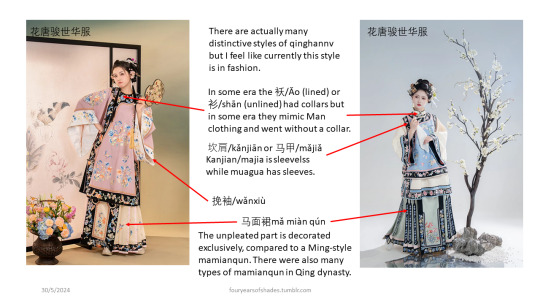
The clothing of women of Han Chinese in the Qing dynasty.
Since the Queue Ordinance wasn't that strictly enforced on Han women, the Han women clothing in the Qing dynasty had quickly absorbed Manchurian's elements while retaining the characteristic two-piece silhouette. (Manchurian women wore a one-piece robe.)
I believed it appeared around 2019 when the styles of hanfu had moved to fully embroidered surface to a more tone down brocade or weaved patterns.
旗装/Qí zhuāng
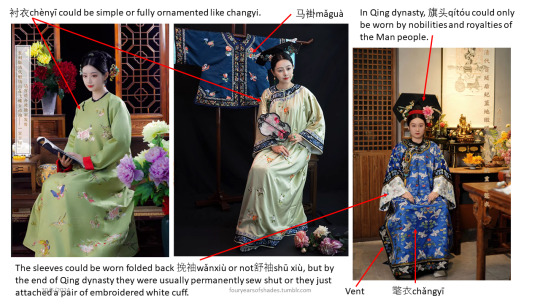
The ethnic clothing of Man people (Manchurian).
The women's clothing are generally in round collar opened on the left (youren) with straight sleeves.
The most basic item is a 衬衣/chènyī, which doesn't have vents.
However, the most common item I have seen on the street is a 氅衣/chǎng yī (probably rented), which should be worn on top of 衬衣, since they have side vents.
They usually have no standing-up collar but in some cases a fake collar could be worn.
On top of changyi they could wear a 马褂/mǎguà、坎肩/kǎnjiān、褂裥/guà jiǎn.
旗袍/Qípáo
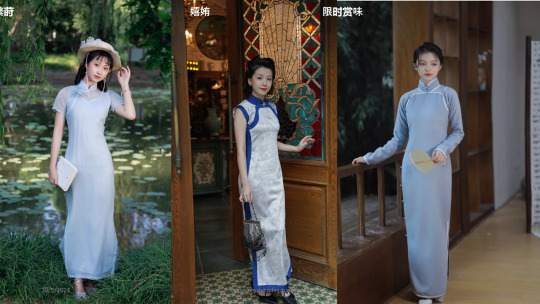
The Chinese clothing of women originated from the Minguo era, known in English as qipao or cheongsam.
The male equivalent is 长衫/chángshān.
Currently in style is the retro-cut, while uses the traditional flat cut (no shoulder seam) instead of the more body-hugging modern draping style.
There are also many variations and cuts, but the overall silhouette is similar.
新国风/Xīn guó fēng、新中式/xīn zhōngshì
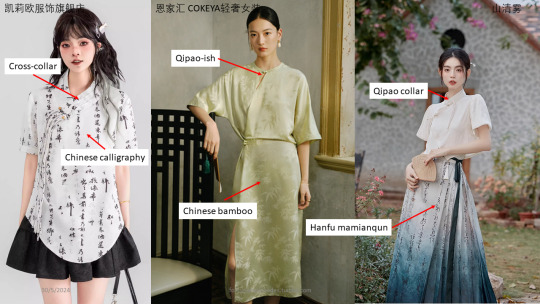
Innovative clothing that was inspired by Chinese traditional aesthetic.
It is an umbrella term.
汉元素/hàn yuánsù refers to clothing inspired by hanfu specifically, while xinguofeng could be inspired by qipao and other ethnic clothing. In addition, hanyuansu is a term more familair to hanfu-ers, so the target audience is slightly different between hanyuansu and xinguofeng.
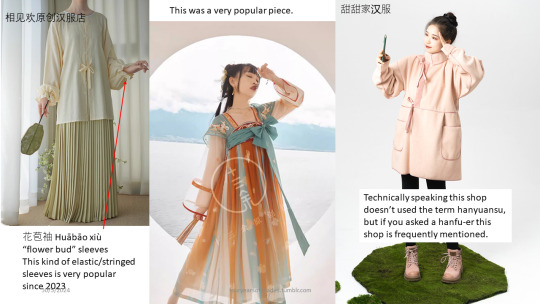
茶艺服/Cháyì fú or 茶服/chá fú,i.e tea dress, which aimed to convey a zen and rustic aesthetic could also be considered a sub-style. They are often worn by retirees, artists or workers in tea shops, calligraphy shops, Chinese spas, Chinese traditional medicine clinics etc.
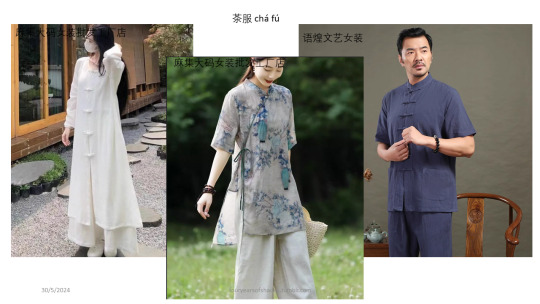
The older "Chinese style" generally refers to 唐装/Tángzhuāng and 中山装/Zhōngshānzhuāng.
Tangzhuang (Tang Suit) was a men suit characterized with a mandarin collar with a row of 盘扣/pán kòu frogs in the middle. There are two pockets at the bottom front of the suit. It was a well-known looked worldwide due to the 2001 APEC summit. However, other clothes resembled a 马褂/mǎguà could also be called a tangzhuang.
Zhongshanzhuang was designed and named after Sun Yat-sen but was often known in English as the Mao Suit. Mao Suit was characterised with a 关门领/Guānmén lǐng(“closed-door collar", but also known as Mao collar in English) with a row of round buttons. There are four pockets at the front of the suit.
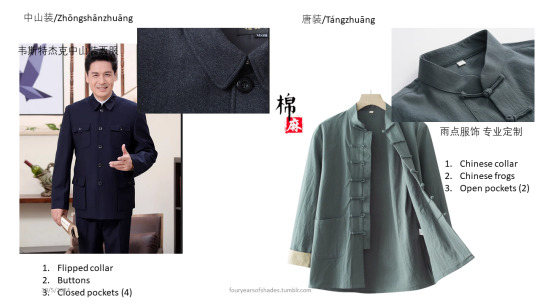
中华lolita/Zhōnghuá lolita
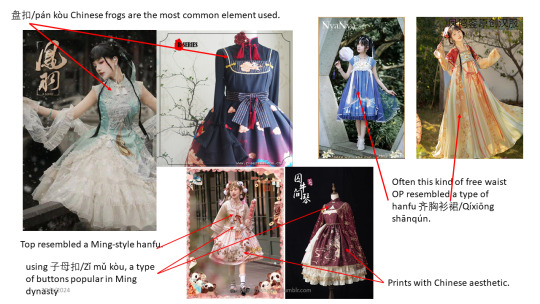
A sub-style of the lolita fashion inspired by cheongsam/qipao, hanfu or other Chinese artistic elements.
The same item could appeared in different styles, but with different cut and accessories. The following examples showed a mamianqun used in different styles.
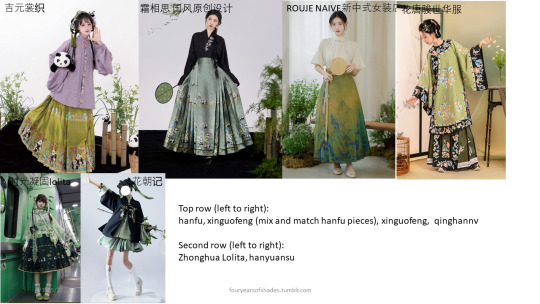
THE END
#chinese fashion#hanfu#qinghannv#qipao#qizhuang#chinese language#non-hanfu#lolita fashion#terminology#i rarely seen men in alternate fashion#like i saw maybe one in the last year#they spent money elsewhere#like shoes#long post#reference#fouryearsofshades#i spent so much time on this post#hope you will like it#feel free to correct me if i am not right
630 notes
·
View notes
Text


This Sims 4 Asian-Inspired Long Dress is based by the classic qipao (or cheongsam), a traditional garment of Chinese origin, known for its sleek, form-fitting style. It features a modern mandarin collar with a cutout on the chest for a contemporary and bold touch. My Patreon followers voted for this design in a poll, and now you can enjoy it in your game!
Thank you very much for your support!
Download (Patreon, Early access)
#sims 4 cc#guemarasims#the sims 4 cc#sims 4#the sims 4#sims 4 fashion#sims 4 female cc#sims 4 finds#ts4#the sims custom content#sims 4 dress#sims 4 dresses#sims 4 outfit#ts4 dress#ts4 outfits#sims 4 asian#sims 4 chinese#sims 4 aesthetic#ts4 custom content#ts4 cc
210 notes
·
View notes
Text

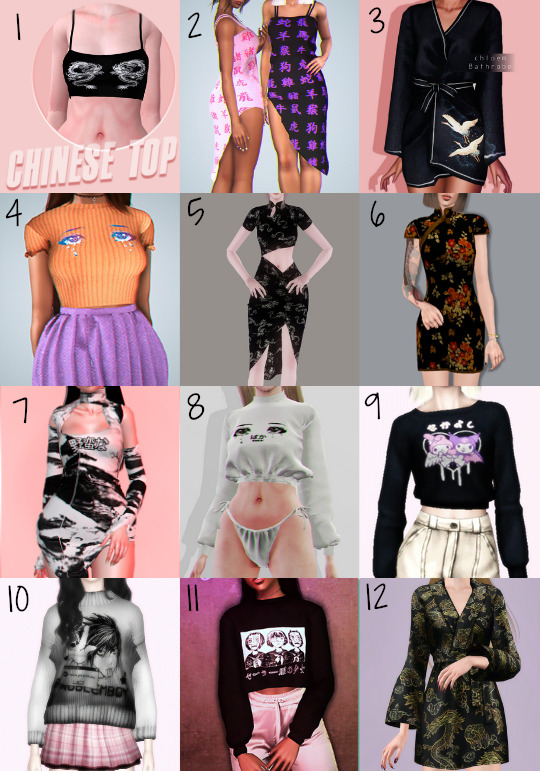
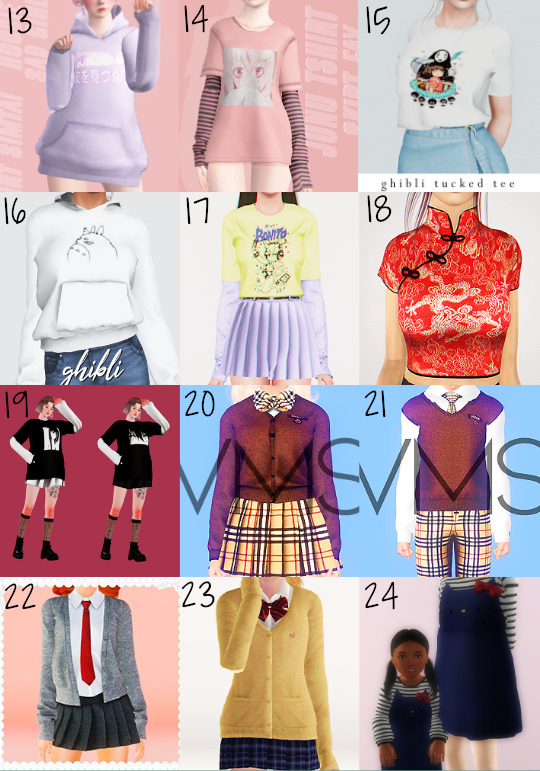
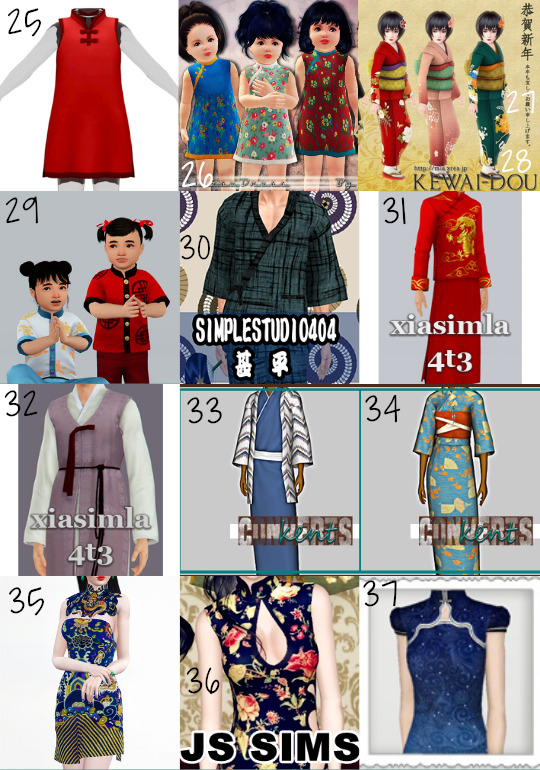
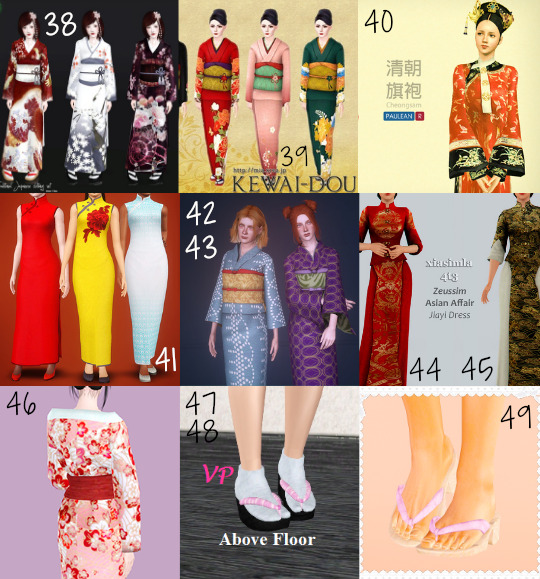
Asian saves/worlds are my favorite to play with, so my next sets of CC lists will be focused on Asian CC that I personally use. This list includes some traditional and modern takes on Asian clothing.
WanderingSims Fave CC - Asian Clothing List
babytears - Chinese Top
DizzieSims - Desire Dress
Kiko - Chloe Bathrobe
DizzieSims - Anime Eyes Shirt
CHAMIS - Chinese Outfit
EnableLlamas - Cheongsam Dress Short
babytears - Savagesims Origami Dress
babytears - Sweater Eveln
Nightosphere - 4t3 AxA 2021 AF Lou Sweater
Nightosphere - 4t3 babytears AF Horror Void Sweater
DizzieSims - Long Sleeve Sweater
Rollo-Rolls - 4t3 Trillyke AF Karma Dress
babytears - Hoodie Sad Girl
babytears - Tshirt Junu Nitro
Keiba - Ghibli Tucked Tee
johziii - Ghibli Hooded Sweater
Plbsims - Epiphany Tshirt
simsoficeandfire - Slay Classy Qipao Top
CHAMIS - Skirt Tshirt
VMSims - 4t3 School Korean Uniform Female Top & Skirt
VMSims - 4t3 School Korean Uniform Male Top & Pants
Ameriko-Steelie - 4t3 Rimings Autumn School Uniform Outfit AF/TF
Ameriko-Steelie - Pu+Chi House Joshikousei Costume School Uniform TF
Nightosphere - 4t3 casteru CF/PU Kiara Dress
MainlyJustTheSims - Lunar Outfit
Lutetia - Chinese Styled Dress (TSR)
Kewai-Dou - Cloth Kimono Child
Kewai-Dou - Zouri Tabi Child
xiasimla - 4t3 PU Shirt Lunar
SimpleStudio - kkamjinbei
xiasimla - 4t3 AM ChGroom
xiasimla - 4t3 AM Hanbok
kent404 - Japan Male Yukata
kent404 - Japan Female Yukata
richrichooo - The Cheongsam Style 2006
JS Sims - Reformed Cheongsam
lemonleaf - Cheongsam 2
Klavix - Japanese Kimono
Kewai-Dou - Japanese Kimono Type 1
Paulean R - Cheongsam
sweetdevil-sims - WA Cheongsam Teen
YouWillNeverFindMe - 4t3 SimpleStudio404 Japanese Kimono AF/EF
Ameriko-Steelie - 4t3 SimpleStudio404 Kimono Teen Conversion
xiasimla - 4t3 Zeussim Asian Affair Dress
Ameriko-Steelie - 4t3 Zeussim Asian Affair Dress Teen Conversion
vivia - AF Kimono Renewer
VenusPrincess - AF Zori With Tabi Above Floor
Ameriko-Steelie - VenusPrincess Zori with Tabi Teen Conversion
Ameriko-Steelie - 4t3 Arltos Geta Kimono Shoes AF/TF
479 notes
·
View notes
Text





Meng Ziyi 's Mid-Autumn Festival look wearing a modern-style qipao
#meng ziyi#孟子义#chinese actress#chinese fashion#cheongsam/hanfu/qipao#qipao#chinese qipao#chinese style
73 notes
·
View notes
Note
adding onto the conversation about Xanthe Zhou's outfit...
as another chinese-american, I see a lot of clothing that claims to be "inspired" but all it does is make western clothes in silk brocade or remake the same red qipao or tangzhuang people wear in old kung fu movies.
it's frustrating to see only those takes on traditional clothes when there are so many things to choose from! chinese history is expansive, to put it lightly, and even us ABCs have access to a range of traditional clothing.
my specific issue with Xanthe's is that, to me, it's just a reskinned version of Mulan's casual clothes in Wreck-It Ralph 2 (from 2018, while I'm p sure Xanthe debuted in 2023).


technically they have an undershirt with the mandarin collar, but it feels like almost an afterthought. it doesn't even differentiate itself with the slanted neck opening that goes to the side (idk what to call it, examples below from an article on hakka clothing)
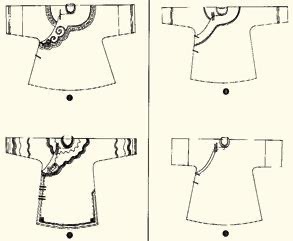
the writer, Alyssa Wong, is chinese-american (as is one of the editors), and the penciler, Haining, is taiwanese, but that doesn't automatically make their work un-critiquable representation.
I don't doubt that it resonates with some people - my issue is that it's an incredibly safe design, one that doesn't introduce anything new to western audiences. the clothes they wear while hero-ing can be anything, and that's what the creative team chose?
I have other feelings about the fact that they chose to make Xanthe have spiritual powers, which feels like it is not helping the "Chinese people are a mystical kung fu people" stereotype in the US, (especially given how few chinese-americans are given their own comic run at dc), but I digress.
Yes to all of this!! I get why people like Xanthe's fashion as a character design, but in terms of creative innovation and a design that informs a character's narrative,,,Xanthe's clothes look more like an easy way to cosplay the character over anything else :I like you said, we've got this after-thought yellow mandarin collar and a bomber jacket with motif on it. It's giving "clunky way of combining traditional and modern". I even made the Wreck It Ralph Mulan outfit comparison too because it really isn't new!! It's such a mainstream safe look that Disney put Mulan in it. Not even a hanfu for Xanthe? Aiyah
Indeed! Spirit World has an majority-asian team of creatives and hey it's cool to see an entire creative team with their names written out in hanzi in the credits but that doesn't guarantee an infallible piece of fiction free of criticism. Including the representation. Especially when it comes to inter-community critique, we're more than allowed to be critical of the creative choices on display.
Exactly!! "Safe" is the key word when describing Xanthe and Spirit World. Like it's not outwardly horrible and offensive design (or story), but it's also not saying anything either other than bland "cool". Xanthe's in generic jeans for H'ronmeer's sake. The most fashion-safe statement of all time. For your non-binary Chinese character? Come on. Even Cass got a better outfit in Spirit World >_>
I agree on the whole Spiritual powers thing actually! If they're pairing Xanthe with Johnstantine, I wish they pulled more from Vertigo Hellblazer's approach to the occult and spiritualism. My friends here are practicing shamans, and I think having a Hellblazer approach to the stuff they go through would be so neat. But instead we got. Fighting spirits and demons in fantasy-spirit land with a giant sword spectacle. Like part of why I find the giant sword exhaustively trite is because it's just a signifier for folks to see a cool anime-looking weapon and see how it works in Hollywood-fu fight scenes. It has no deep storytelling purpose other than to look cool. Spectacle seems to topple the grounded reality of Chinese spiritualism here.
Generally I feel like Xanthe suffers the "Superhero first, secret identity second" problem- where the creatives were so focused on what would make a cool superhero that they let the interiors of Xanthe's life and culture fall by the wayside. We don't get to know how Xanthe came to terms with their culture as a Chinese American, or how that intersects with being non-binary. Or even how they choose to express that with the clothes they wear. Just look at the cool fight scenes.
#askjesncin#i really want to like xanthe zhou- but they're lukewarm water. not fresh not hot just. drinkable. I want that to change#back in uni there were a ton of racist pitches for asian characters. always martial arts. always nerd. always spiritual.#if you're gonna have a character be all that (bcuz ofc we can be all of that) give me some authenticity to that experience.#jesncin dc meta
26 notes
·
View notes
Text

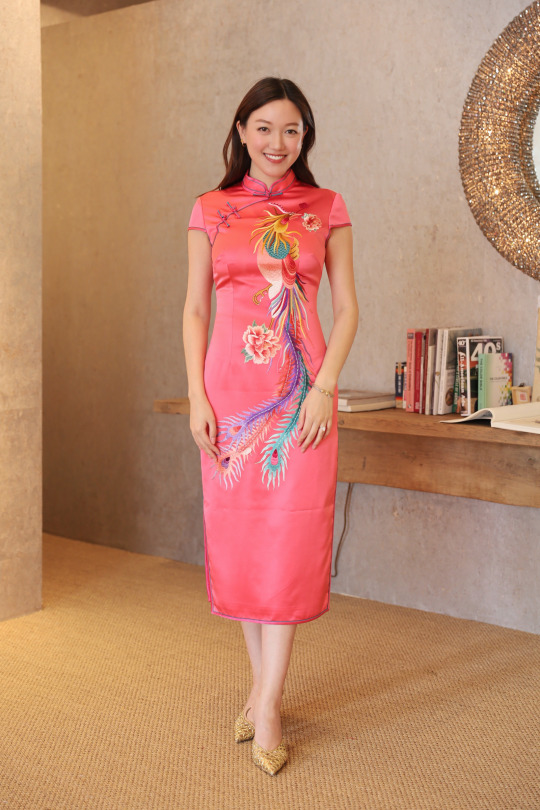
Modern Qipao v.s. Traditional Qipao, which one do you like? Vote!!!!
38 notes
·
View notes
Text
Ziseviolet’s 2023 Tumblr Top 10
1. 2,297 notes - Jan 1 2023
Q: Can you explain the difference between hanfu and huafu?

2. 1,208 notes - Jun 26 2023
Q: How did Han women manage their menstrual cycle historically?
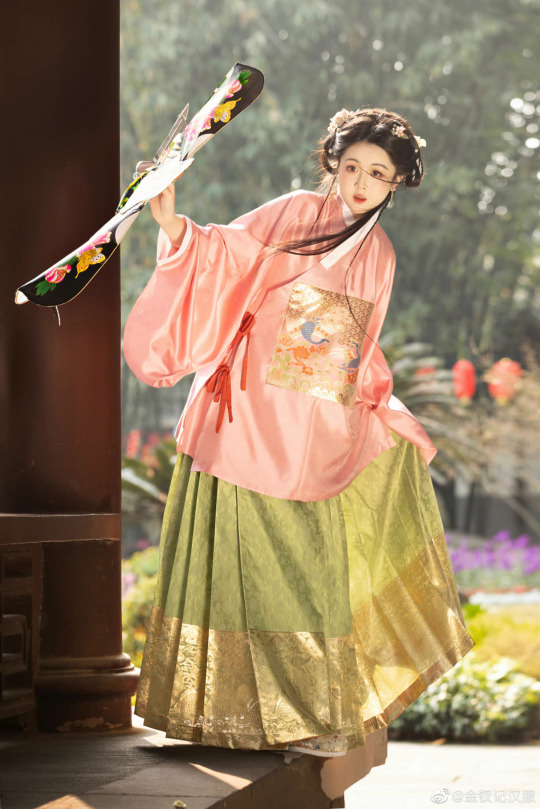
3. 1,104 notes - Nov 21 2023
“Chinese style meets the Matrix”-esque looks.

4. 454 notes - Aug 21 2023
Q: The intricate "eye patches" seemingly made from gold or metal that cover only one eye - do they have a name or is it something made up?

5. 278 notes - Feb 15 2023
Paintings of couples in Chinese hanfu.
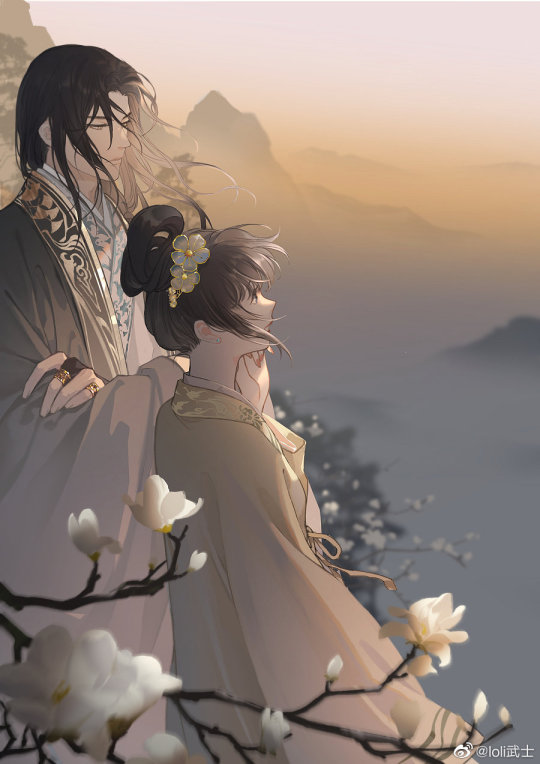
6. 266 notes - Feb 19 2023
Q: How to distinguish fake/knockoff clothes sold online, so we can buy hanfu from official brands and support the designers.

7. 162 notes - Oct 23 2023
Qipao/cheongsam Taobao shop recs.
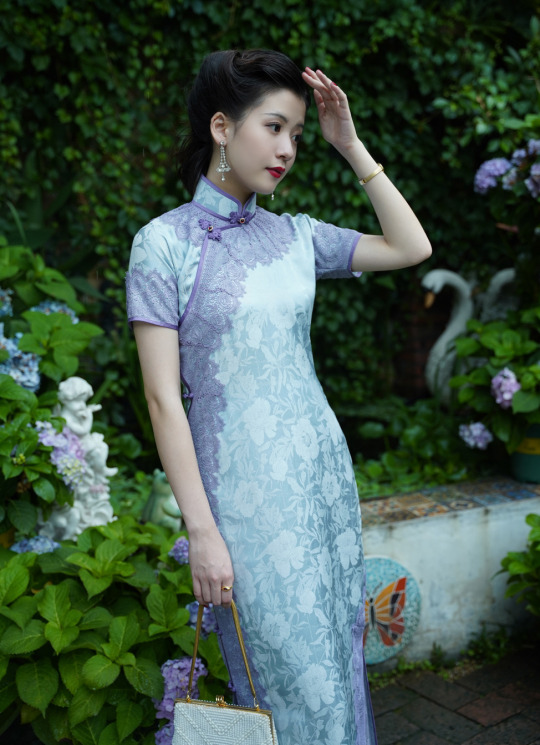
8. 145 notes - Feb 27 2023
Vent.
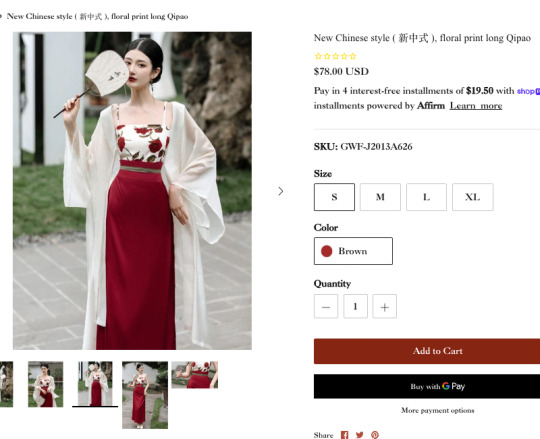
9. 141 notes - Mar 13 2023
Q: It’s better to change "modernized hanfu" into "hanfu theme modern dresses" because most of those are Western dresses with Chinese elements.

10. 136 notes - May 30 2023
Q: What type of clothes did Chinese maids wear? Did they wear ruqun styles and wear their hair in two buns?

See previous years here.
Created by TumblrTop10
95 notes
·
View notes


